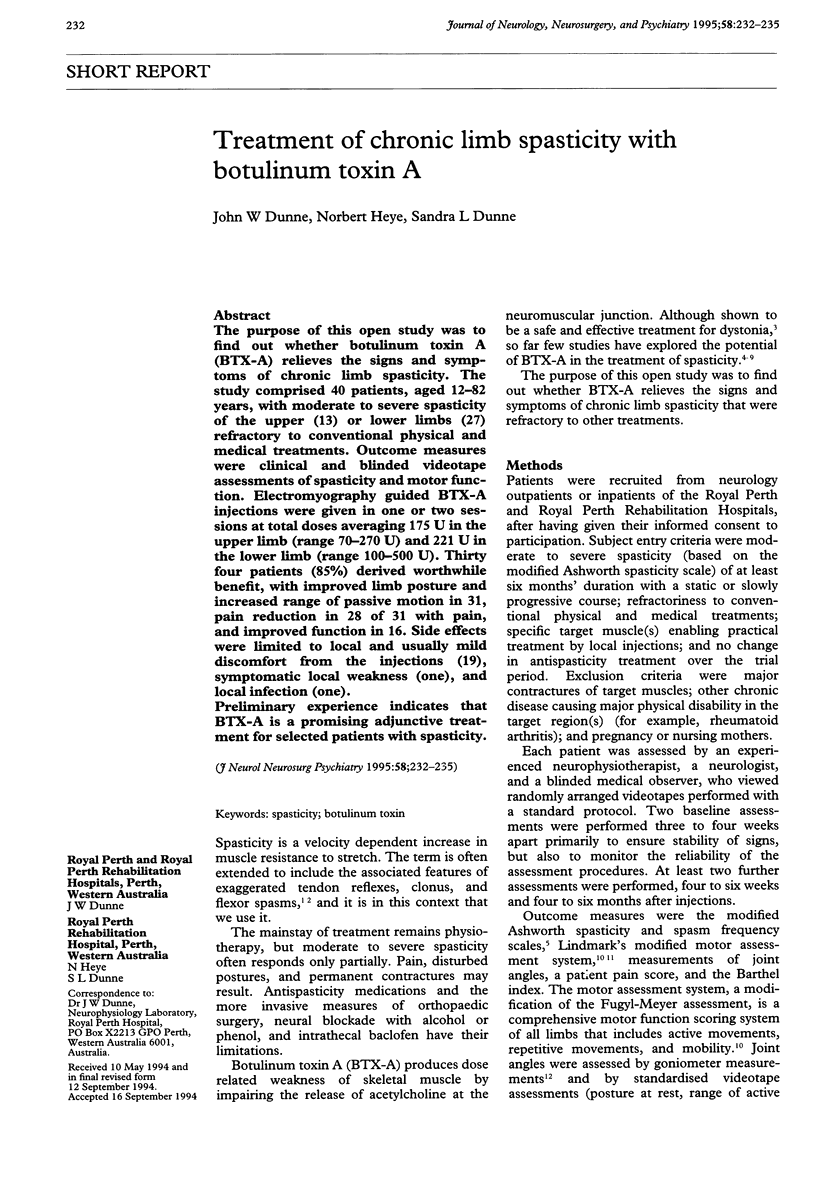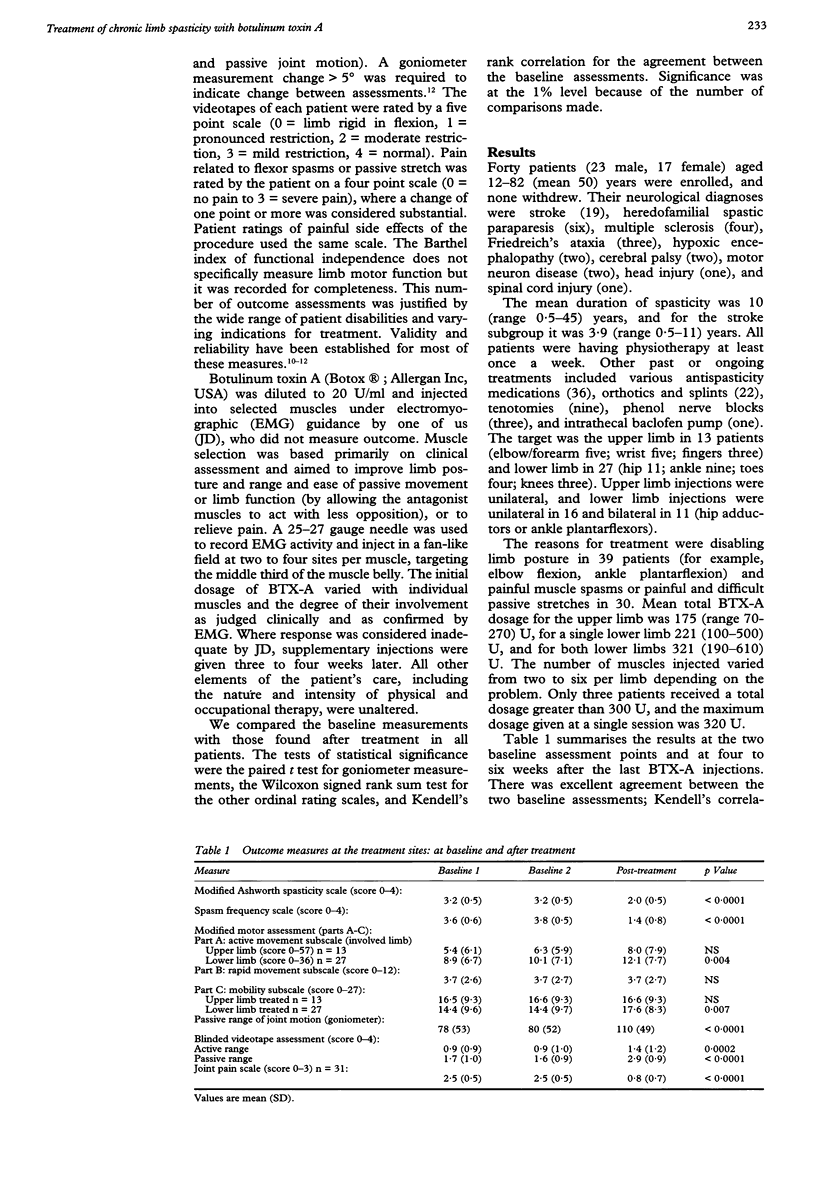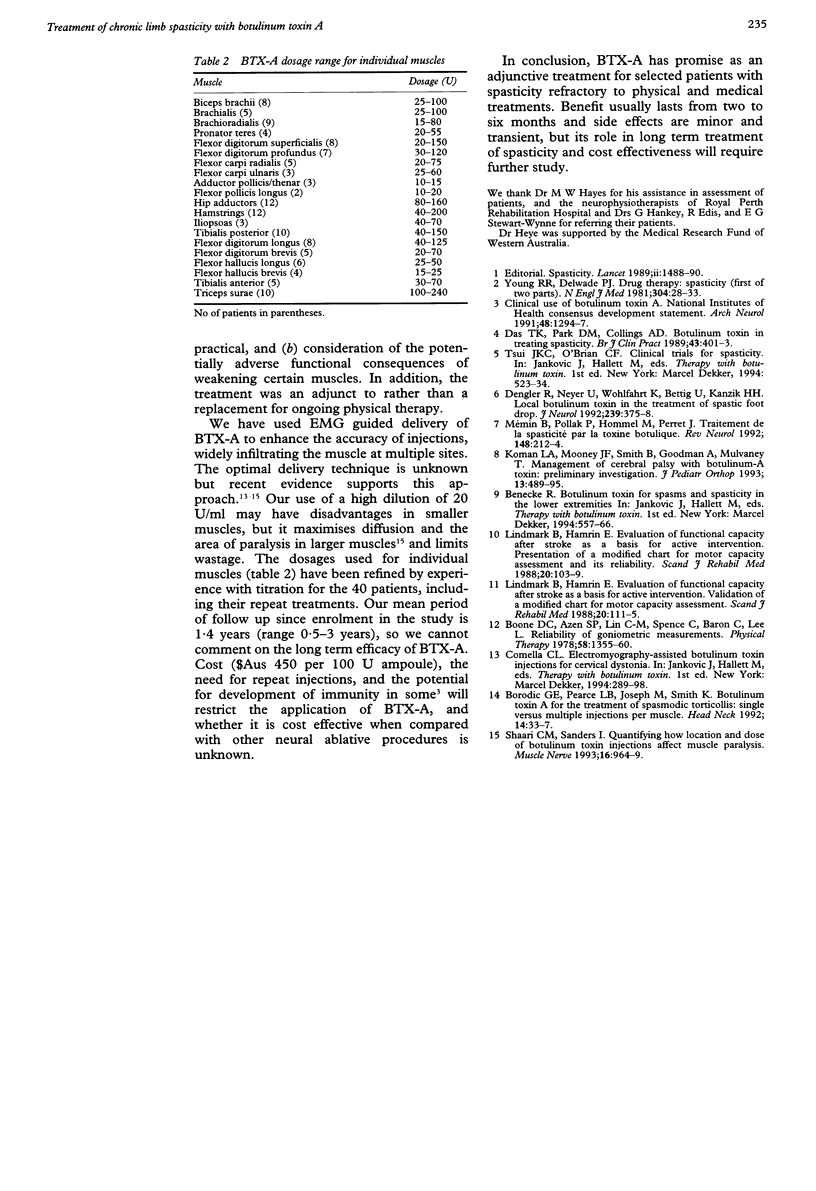Abstract
The purpose of this open study was to find out whether botulinum toxin A (BTX-A) relieves the signs and symptoms of chronic limb spasticity. The study comprised 40 patients, aged 12-82 years, with moderate to severe spasticity of the upper (13) or lower limbs (27) refractory to conventional physical and medical treatments. Outcome measures were clinical and blinded videotape assessments of spasticity and motor function. Electromyography guided BTX-A injections were given in one or two sessions at total doses averaging 175 U in the upper limb (range 70-270 U) and 221 U in the lower limb (range 100-500 U). Thirty four patients (85%) derived worthwhile benefit, with improved limb posture and increased range of passive motion in 31, pain reduction in 28 of 31 with pain, and improved function in 16. Side effects were limited to local and usually mild discomfort from the injections (19), symptomatic local weakness (one), and local infection (one). Preliminary experience indicates that BTX-A is a promising adjunctive treatment for selected patients with spasticity.
Full text
PDF



Selected References
These references are in PubMed. This may not be the complete list of references from this article.
- Boone D. C., Azen S. P., Lin C. M., Spence C., Baron C., Lee L. Reliability of goniometric measurements. Phys Ther. 1978 Nov;58(11):1355–1360. doi: 10.1093/ptj/58.11.1355. [DOI] [PubMed] [Google Scholar]
- Das T. K., Park D. M. Botulinum toxin in treating spasticity. Br J Clin Pract. 1989 Nov;43(11):401–403. [PubMed] [Google Scholar]
- Dengler R., Neyer U., Wohlfarth K., Bettig U., Janzik H. H. Local botulinum toxin in the treatment of spastic drop foot. J Neurol. 1992 Aug;239(7):375–378. doi: 10.1007/BF00812153. [DOI] [PubMed] [Google Scholar]
- Koman L. A., Mooney J. F., 3rd, Smith B., Goodman A., Mulvaney T. Management of cerebral palsy with botulinum-A toxin: preliminary investigation. J Pediatr Orthop. 1993 Jul-Aug;13(4):489–495. doi: 10.1097/01241398-199307000-00013. [DOI] [PubMed] [Google Scholar]
- Lindmark B., Hamrin E. Evaluation of functional capacity after stroke as a basis for active intervention. Presentation of a modified chart for motor capacity assessment and its reliability. Scand J Rehabil Med. 1988;20(3):103–109. [PubMed] [Google Scholar]
- Lindmark B., Hamrin E. Evaluation of functional capacity after stroke as a basis for active intervention. Validation of a modified chart for motor capacity assessment. Scand J Rehabil Med. 1988;20(3):111–115. [PubMed] [Google Scholar]
- Shaari C. M., Sanders I. Quantifying how location and dose of botulinum toxin injections affect muscle paralysis. Muscle Nerve. 1993 Sep;16(9):964–969. doi: 10.1002/mus.880160913. [DOI] [PubMed] [Google Scholar]
- Young R. R., Delwaide P. J. Drug therapy: spasticity (first of two parts). N Engl J Med. 1981 Jan 1;304(1):28–33. doi: 10.1056/NEJM198101013040107. [DOI] [PubMed] [Google Scholar]


